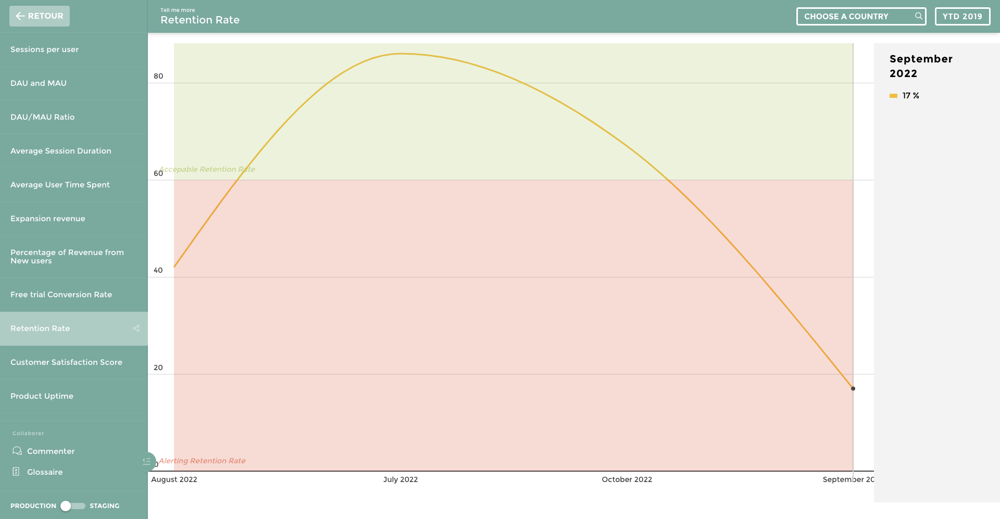Retention Rate - Why is it important?
Retention rate is a metric that displays the users who continuously use a product or service over a specified time period. If your product generates a high retention rate, the product team knows that your customers are extracting the expected value out of their product. On the other end, a product with a low retention rate means you have a leaky bucket with holes to fill.
Churn is a part of the product lifecycle, and the most successful companies in the world experience leaving customers. However, tracking your retention rate with a product dashboard can create insights that turn leaving customers into loyal and delighted brand ambassadors.

What is Retention Rate Used For?
The retention rate is the most helpful in projecting growth and profits. Retention rate relates closely to the rate of acquisition. If your retention rate is greater than your rate of acquisition, you will gain users over time, resulting in greater growth and profits. If your retention rate is lower than your rate of acquisition results in a loss of customers over time and decreased growth.
Although the retention rate projects growth and revenue, it is also the clearest indicator of customer satisfaction. Companies use retention rate to understand these 4 areas:
- Customer loyalty
- Customer experience
- Product value
- Customer base
These four categories all determine the success of a product, and clear weaknesses in one of these categories can be the difference between a billion-dollar product and a failure. Let's talk about why retention rate is paramount to track for your business.
Why Do I Need a High Retention Rate to Be Successful?
We're all familiar with this phrase: it costs five times more money to acquire new customers than to retain existing ones. The relationship between retention rate, customer acquisition cost, and churn determines a company's bottom line.
A growth in retention rate means exponential growth for a business' bottom line. According to Bain & Company, a rise of 5% in retention rates can boost a company's growth by over 25%.
The world of web-based products and SaaS businesses is a cutthroat one. You may think that you have time to demonstrate value to your users, but this is not the case. Let's take mobile apps as an example. The average mobile app loses 90% of its users within 30 days of download. Replacing this many users a month is a costly proposition, and establishing your average retention rate is the first step toward keeping more of your customers on the boat.
How Do I Calculate Retention Rate?
Retention rate can be calculated by using the following formula:

Here's a breakdown of the variables:
- E: Number of customers at the end of the time period. For example, if you are measuring retention rate annually, E would be the number of customers you have on December 31st.
- N: Number of customers gained within the time period.
- S: Number of customers at the beginning of the time period.
Why Should I Track Retention Rate?
Creating a dashboard to track product KPIs like retention rate is the first step toward assessing your company's growth potential. By understanding the number of customers that your company retains and the number of customers that churn, you can begin the process of garnering feedback from churning customers and improving your product for retained customers.


.png?width=710&name=CTA%20Template%20%E2%80%94%20Free%20Trial%20(2).png)